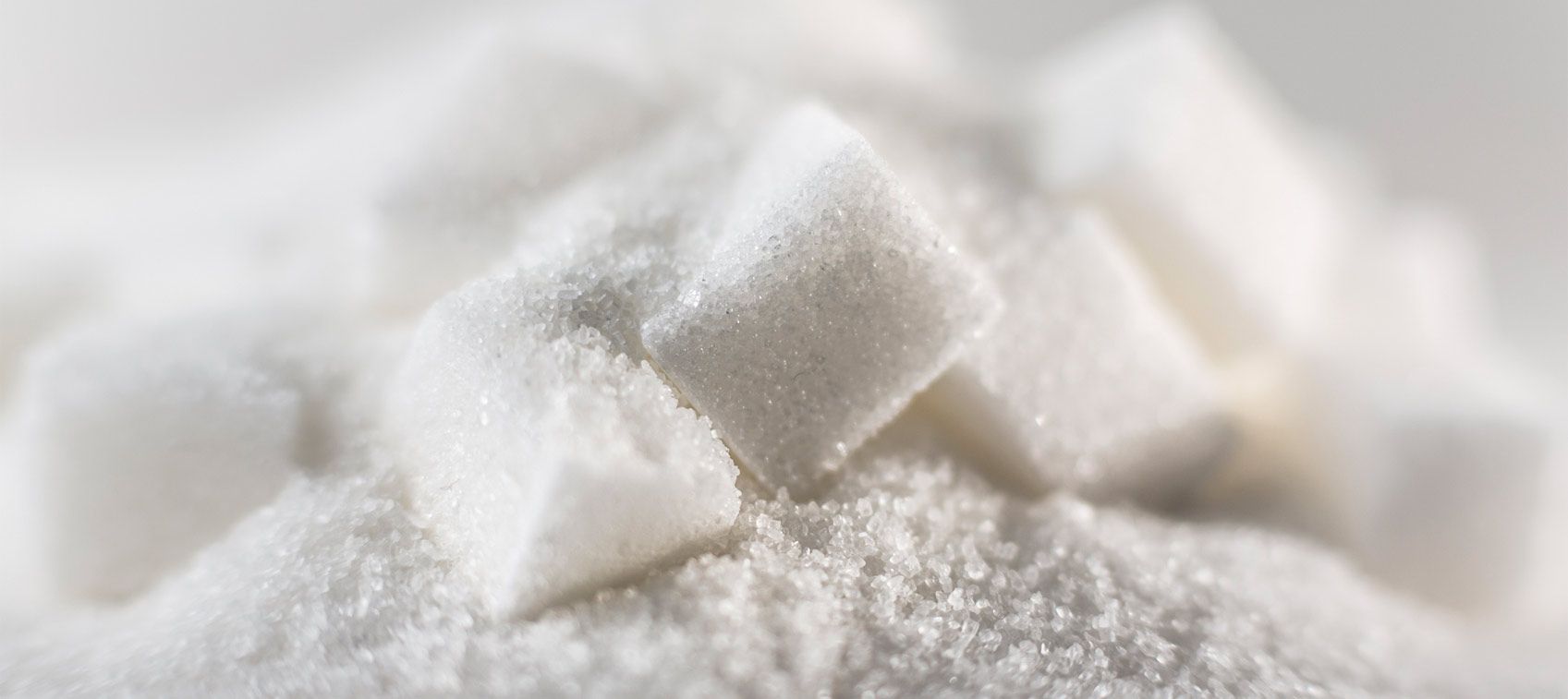
One of the biggest hidden threats to our health is the consumption of sugar and its evil twin, high-fructose corn syrup.
High-fructose corn syrup (HFCS) was developed in the early 1970s as a substitute for sugar in processed foods. At one time, fructose was thought to be a healthy sugar substitute, since it is the same type of sugar found in fruits and some vegetables and doesn't seem to raise blood sugar levels or insulin secretion.
It's true that fructose found in natural whole foods doesn't cause spikes in blood sugar. However, these foods contain very small amounts of fructose. Furthermore, nature binds this sugar with complex fiber, vitamins, minerals, and other nutrients. As such, fructose-containing fruits and vegetables actually help prevent cardiovascular and other health problems.
Fructose in processed foods acts much differently. This fructose gets shuttled directly to your liver, where it becomes one of the building blocks of triglycerides, which are fat-storage molecules. Triglycerides are released into the bloodstream, carried by LDL cholesterol, and deposited on the walls of the arteries.
Another adverse effect of HFCS is that it impairs your body’s ability to recognize when it is full. It suppresses the release of leptin, a hormone that plays a key role in regulating appetite and metabolism, and boosts the level of another related hormone, ghrelin, which enhances the desire to eat more.
Other Health Problems Caused by Sugar
Consuming refined sugar and HFCS contributes to a process called glycation. Glycation refers to the combination of a sugar and a protein molecule.
Most everyone has seen the effects of glycation in the kitchen. During baking, sugar combines with certain amino acids in grain proteins. This chemical reaction causes bread and pastries to turn brown. The same reaction also occurs when meats are glazed, or when the clear, runny portion of a raw egg gets heated and becomes a solid white mass.
In the body, glycation occurs when blood sugar (glucose) combines with the amino acids tryptophan, lysine, and arginine. This reactive process creates byproducts called advanced glycation end-products (AGEs).
In the body, glycation can be dangerous. For instance, when proteins in blood vessels undergo glycation, you get stiffer, less flexible arteries, which lead to high blood pressure, plaque formation, blood flow blockages, heart and artery disease, and stroke or heart attack. The smallest blood vessels are the hardest hit, such as those in the back of the eyes, the kidneys, and the brain. These areas require a constant supply of glucose to meet their high energy requirements; as a result, they have the highest degree of glycation.
Sugar and Your Heart
Heart problems are yet another health problem caused by sugar. In one published study, people who consumed 10–24.9 percent of their daily calories as added sugar had a 30 percent higher chance of death from heart attacks, compared to those who took in less than 10 percent. Those who got more than 25 percent of their calories from added sugar had close to three times the risk. Even after adjusting for age, sex, race/ethnicity, and environmental issues, there was still a direct correlation between the daily dose of sugar and cardiovascular death.
The way our bodies handle sugar is well known. If you happen to be exercising intensely, your body uses sugar as energy. However, during inactivity, extra sugar triggers the pancreas to raise insulin levels. Insulin converts sugar to triglycerides, which are transported through the bloodstream to the liver for storage. High levels of triglycerides in the bloodstream increase clotting risk, and when deposited in the liver result in fatty liver disease. Insulin also causes this extra fat to be stored as belly fat, which blocks insulin receptors and causes insulin levels to rise even higher.
This vicious cycle eventually progresses to metabolic syndrome, diabetes, and cardiovascular disease.
Sugar and Your Brain
Health problems from sugar extend all the way into the brain.
Researchers now call Alzheimer's disease type 3 diabetes. This describes what happens when type 2 diabetes progresses to the point that it begins to destroy and alter brain function.
Research out of Brown Medical School has found that cell death and amyloid plaques in the brain appear to be linked to abnormal insulin signaling—the exact same thing that happens in other parts of the body with diabetes. The lead researcher stated that, “Alzheimer’s is a metabolic disease with virtually all the features of diabetes mellitus, but largely confined to the brain.”
The brain is one of the most metabolically active organs, using over 20 percent of the body's total energy requirements. It relies almost entirely on glucose from the bloodstream, which requires proper insulin signaling. In the brains of advanced Alzheimer’s patients, insulin receptors were 80 percent less active than those found in normal brains.
One of insulin’s jobs in the brain is to initiate the production of acetylcholine. This neurotransmitter is involved in learning and memory, and also stimulates muscle tissue. Deficiencies in acetylcholine are a known marker of Alzheimer’s. It should tell us something when researchers induce amyloid brain plaques and/or Alzheimer’s disease in mice by feeding them a diet high in sugar and low in omega-3s. This diet causes a severe disruption of insulin receptor signaling.
Other research indicates that having diabetes doubles the risk of Alzheimer’s. Researchers performed MRI scans on 614 people (average age 62) who had diabetes for an average of 9.9 years and found the following:
- For every 10 years they had the disease, their brain appeared to be two years older than the brain of a non-diabetic;
- The higher their average blood sugar level, the more their brain decreased in size;
- The longer they had diabetes, the greater their risk of dementia; and,
- The brain size of diabetics decreased twice as rapidly as non-diabetics.
Obviously, sugars/refined carbohydrates and diabetes aren’t the only factors that influence Alzheimer’s disease. But it’s a connection that cannot be ignored.
How to Break the Sugar Addiction
It’s one thing to tell people they need to eliminate sugar, and another for people to actually do it. It doesn’t help that sugar is so incredibly addictive. If eat consume it every day, you are likely addicted to it—and breaking the habit can be hard, both mentally and physically.
However, it’s not impossible. Here are a few tips to break the sugar addiction and get your health back on track.
Make Smart Substitutions
Substitute either stevia or xylitol for sugar.
Stevia doesn't raise blood sugar, and can also clear glucose from the bloodstream and lower blood pressure.
Xylitol has the same consistency as sugar but with 40 percent fewer calories, and can be used in practically every recipe that calls for sugar. It doesn’t trigger the release of insulin from the pancreas, and it has been shown to remineralize tooth enamel, reduce dental plaque and cavities, prevent ear infections, and even increase bone density.
Xylitol has been known to cause mild digestive upset in some people, so try slowly incorporating it into your diet, gradually increasing over time.
Read Labels Carefully
While natural whole foods should be your primary source of calories, it’s inevitable that you’ll have to buy some type of packaged food at some point. So, check labels and make sure any form of sugar is not one of the first four or five ingredients on the label. Look specifically for:
- Sucrose
- Dextrose
- Fructose
- Maltose
- Lactose
- High-fructose corn syrup
If you do buy processed foods, choose those with at least a few grams of fiber. This will help slow the release of sugar into the bloodstream.
Adjust How and What You Eat
The first few weeks of trying to shake a long-standing sugar addiction are when the cravings are most intense. Studies have shown that eating larger meals earlier in the day and smaller meals in the evening can be beneficial in a couple ways. First, our ability to handle carbohydrates deteriorates over the course of the day. Second, the levels of various hormones (melatonin, cortisol, insulin, leptin, and ghrelin) have their peaks and troughs at specific times of the day based on the circadian cycle. Eating at the proper times doesn’t disrupt this timing and helps ensure optimal metabolic, immune, and endocrine function.
To help stabilize blood sugar levels between meals and reduce cravings, eat small high-protein/fat snacks, such as a tablespoon of natural unsweetened peanut butter (choose a brand that contains only peanuts and salt), a couple tablespoons of cottage cheese, a slice or two of cheese, half an avocado, or a small serving of nuts. But don't get carried away as these can be high in calories. Very small portions should suffice.
Take L-Glutamine
Supplementing with L-glutamine can help stabilize blood sugar and reduce cravings. Glutamine can increase or decrease blood sugar, depending on the situation. The changes aren’t dramatic, but they are just enough to safely, effectively, and quickly blunt blood sugar dips without causing corresponding spikes.
Glutamine can be purchased in capsules or in bulk. If you crave anything sweet, simply break open a 500 mg capsule on your tongue and most likely the craving will subside.
Fix Nutritional Deficiencies
Certain nutritional deficiencies have been linked to sugar cravings. Specific vitamins/minerals are essential for proper glucose utilization:
- B vitamins; Food sources include beef liver, sardines, fish, eggs, and various nuts
- Zinc; Food sources include pine nuts, pecans, almonds, pumpkin seeds, oysters, and prawns
- Chromium; Food sources include mussels, oysters, Brazil nuts, and broccoli
- Vanadium; Food sources include shellfish, parsley, dill weed, and mushrooms
- Magnesium (in supplement form, aspartate seems to work the best); Food sources include Brazil nuts, almonds, pumpkin seeds, sunflower seeds, avocados, dark leafy greens like spinach, and chocolate
Finally, don’t use artificial sweeteners like sucralose or aspartame, as these can disrupt the body’s natural ability to regulate food intake and body weight. If they were effective weight loss tools, everyone would be skinny.
I hope this gives you some good ideas on how you can limit sugar and break a sugar addiction. This is a crucial step to getting and staying healthy, so give them a try!


